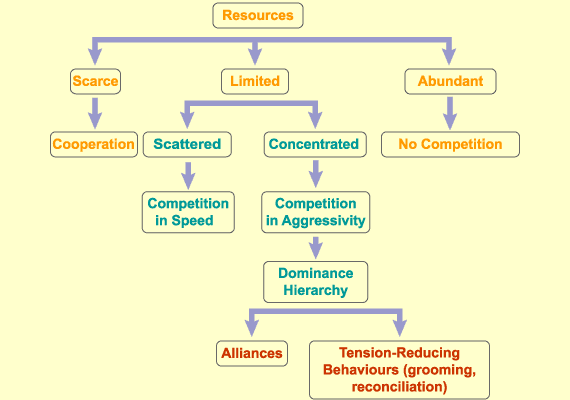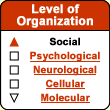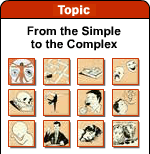|
|



Protect
Your Immune System by Refusing To Be Dominated!
The functional hierarchies in living
organisms do not work the same way as the hierarchies of
values or social classes in human societies.
These social hierarchies reflect an instinct for dominance
that lets people acquire power to better satisfy their own
needs. In such hierarchies, the higher levels control the
lower levels, and information travels essentially from the
top down.
In contrast, in functional hierarchies in living organisms,
each higher level of complexity subsumes the levels below
it but does not control them. Instead, it simply informs
them of the needs of the organism as a whole. In return,
the lower levels make the metabolic needs of their components
known to the higher levels. Thus, information travels in
both directions. |
|
|
Scarcity of resources that are geographically
concentrated (and hence physically defendable) encourages the emergence
of aggressive competition among the individuals in a society. As
a result, a dominance hierarchy becomes established that institutionalizes
these conflictual relationships.
The main effect of this hierarchy is that
every individual strives to rise to higher levels to obtain better
access to the scarce resources.
As the following table shows, when aggressive
competition results in a dominance hierarchy, people form alliances
and engage in behaviours either to reduce the tension among them
(for example, mutual grooming among primates, or social conversation
among humans) or to reconcile after conflicts.

Studies have shown that among the great apes,
rank in the dominance hierarchy is transmitted in two main ways:
- through family-support mechanisms:
when a mother helps her offspring to deal with their first conflicts,
she passes her dominance ranking on to them, thus preventing them
from slipping further down in the hierarchy;
- through alliances with high-ranking
individuals: when one individual intervenes in a conflict
between two others, it is always to support the more dominant
individual. The corollary is that a dominant individual who is
isolated and deprived of his or her usual sources of support
will quickly be overthrown by a coalition of subordinate individuals.
In human societies, family dynasties and constant
business mergers are manifestations of these same mechanisms that
are already so well developed in other primate species. And just
like our cousins the apes, we humans rarely take our confrontations
all the way to the point of physical combat, because through the
interplay of alliances, our hierarchies become highly stable. Thus,
they often perpetuate social inequalities from one generation to
the next. This phenomenon is far more complex in human societies
than in those of other primates, but in essence there is nothing
new about it.
Even today, our political systems, despite
their seeming diversity, are still influenced by these very old mechanisms
for centralizing power. These systems may no longer be monarchies,
but regardless of what we call them, they are still actually controlled
by a very small number of dominant individuals.
In today’s human societies, however,
information is becoming a more important source of power than physical
resources. The
influence of the mass media and the public relations firms that
work for the large multinationals drives this fact home vividly.
Socially, the key difference between
humans and other primates is unquestionably our use of language,
which lets us achieve high levels of abstraction and hence
gives us a high potential for deception.
In ape societies, there are no wars. There are no political
movements built around leaders who channel the aggression of
one group against another. In human societies, however, language
can be used to focus a country’s entire population on
a single goal. For instance, the ruling class will use fine
speeches to stir up the patriotic fervour needed for its wars
of conquest.
But language can also build bridges among human beings, because
it gives us such an effective tool for understanding one another.
|
|
|





